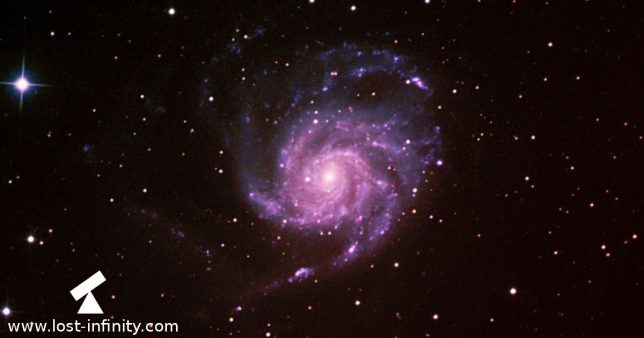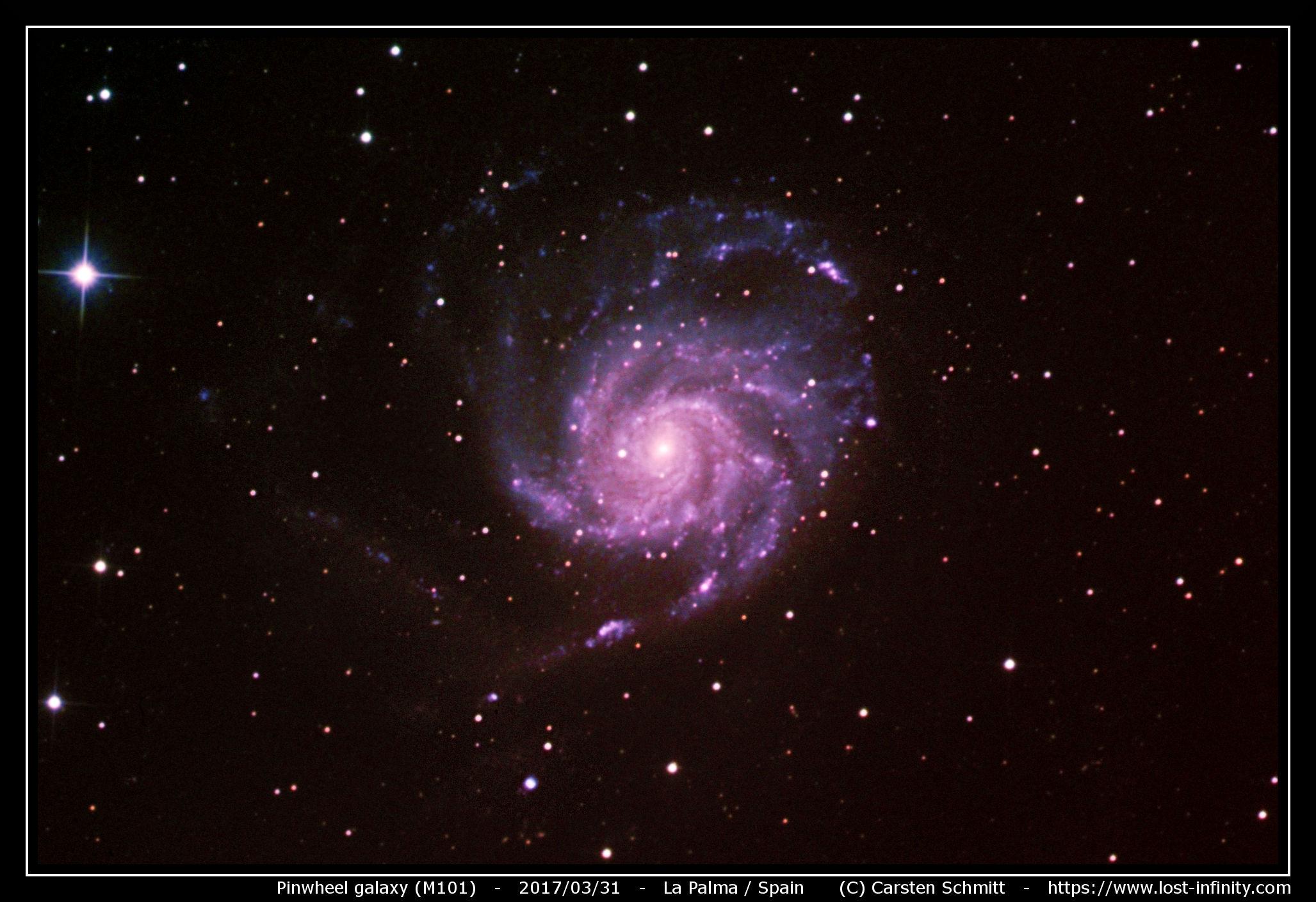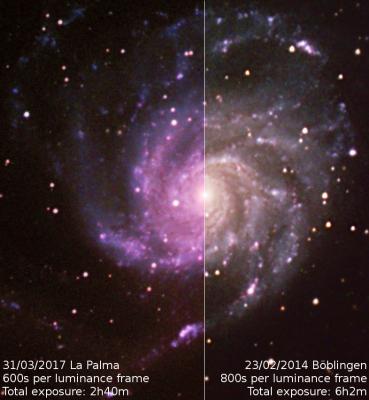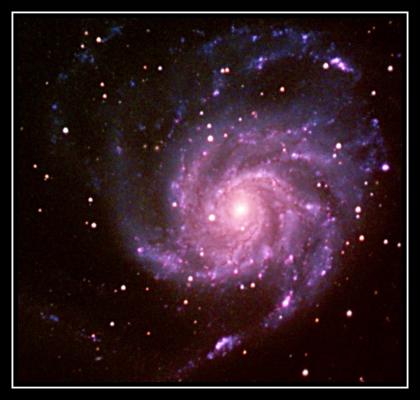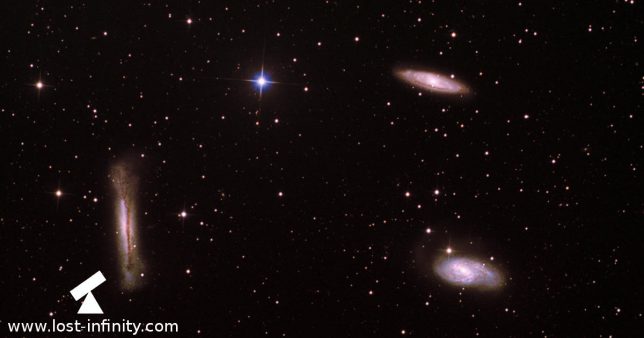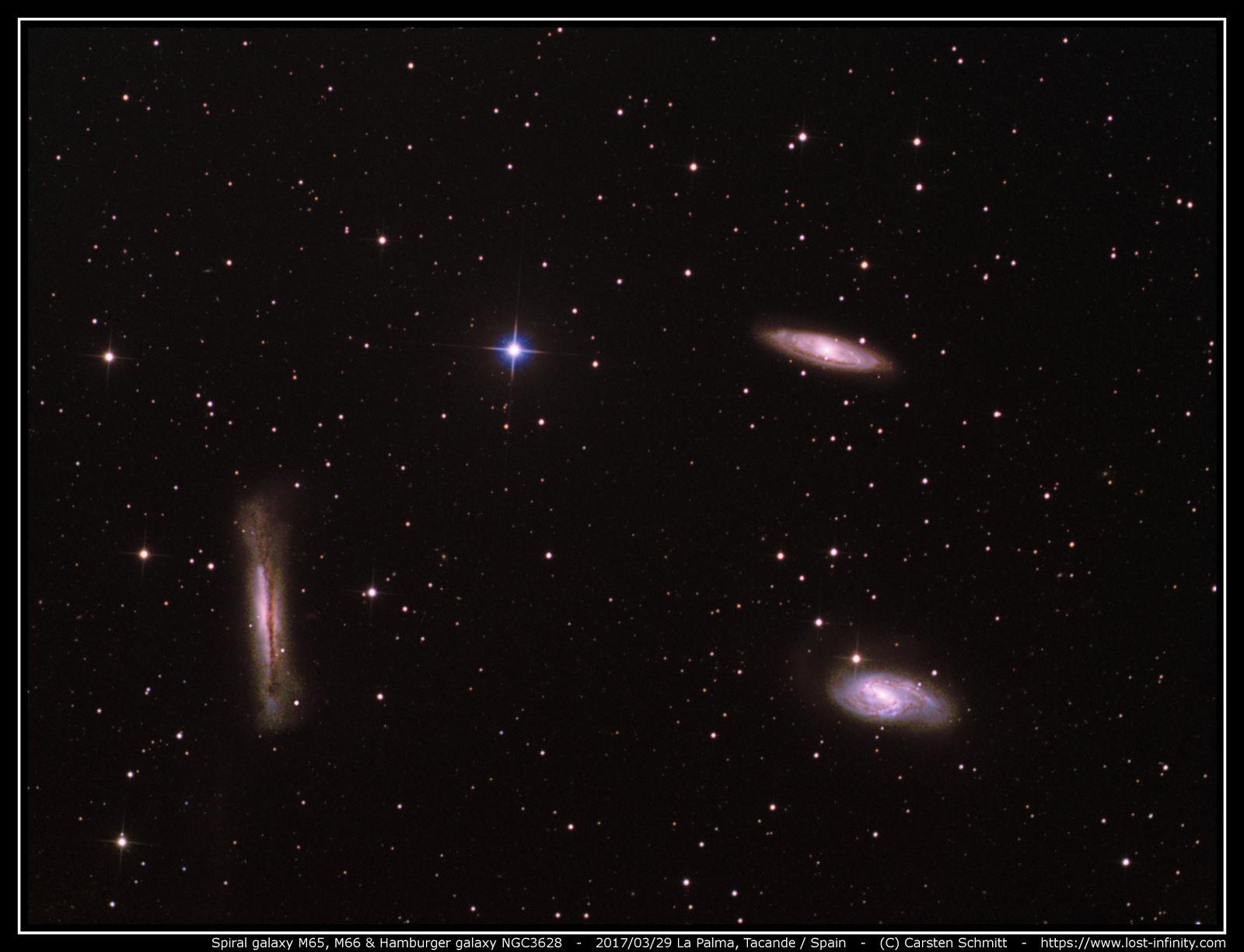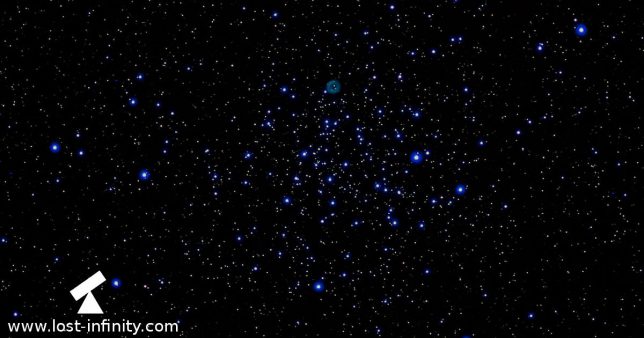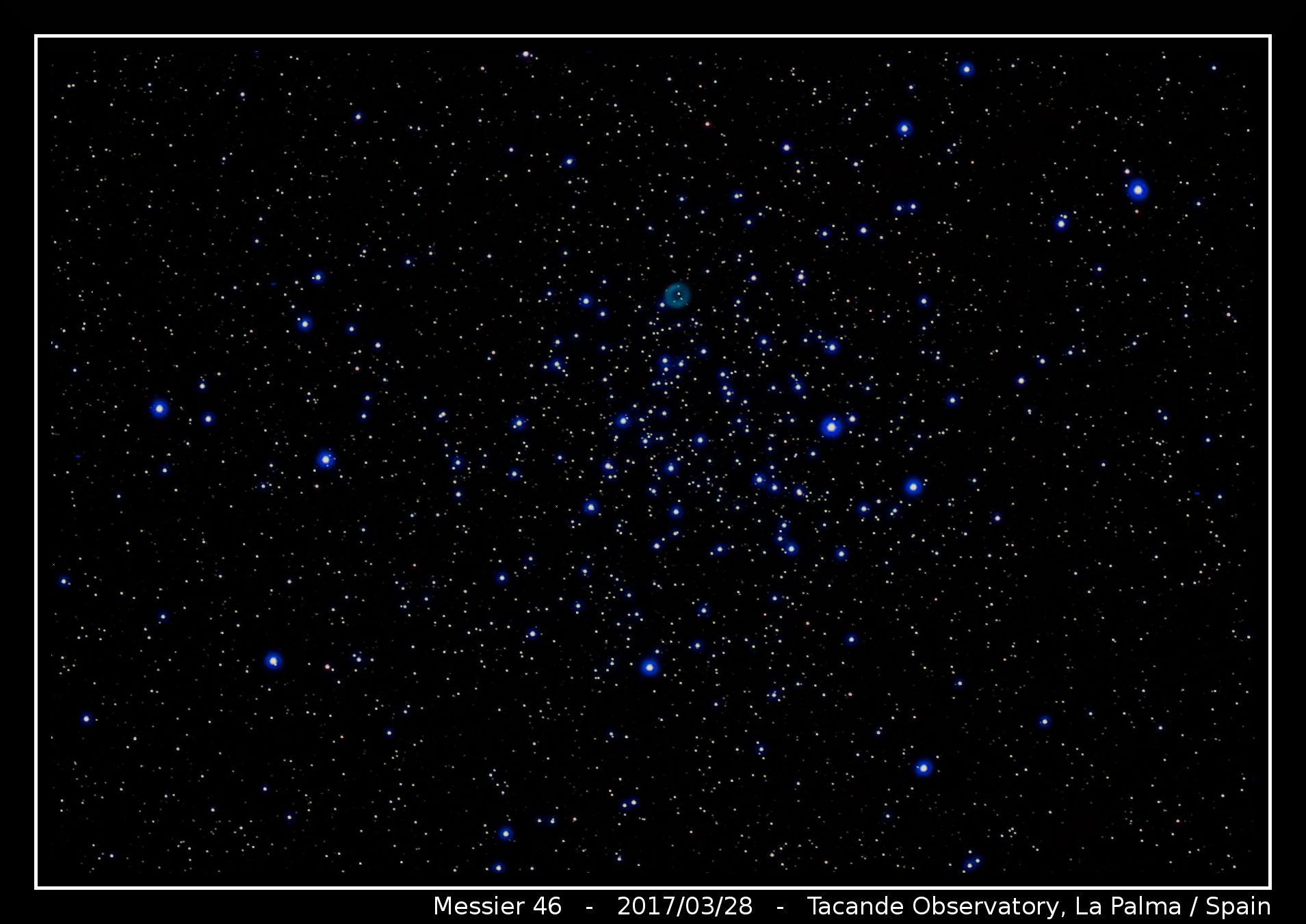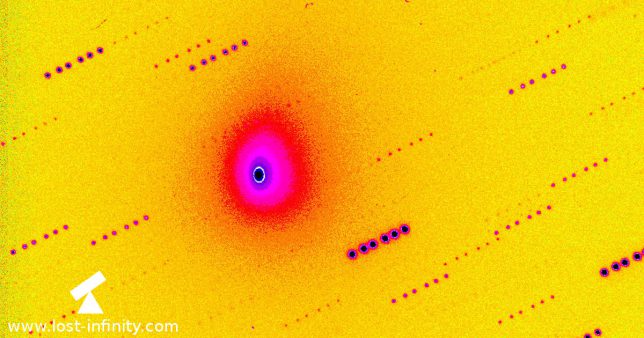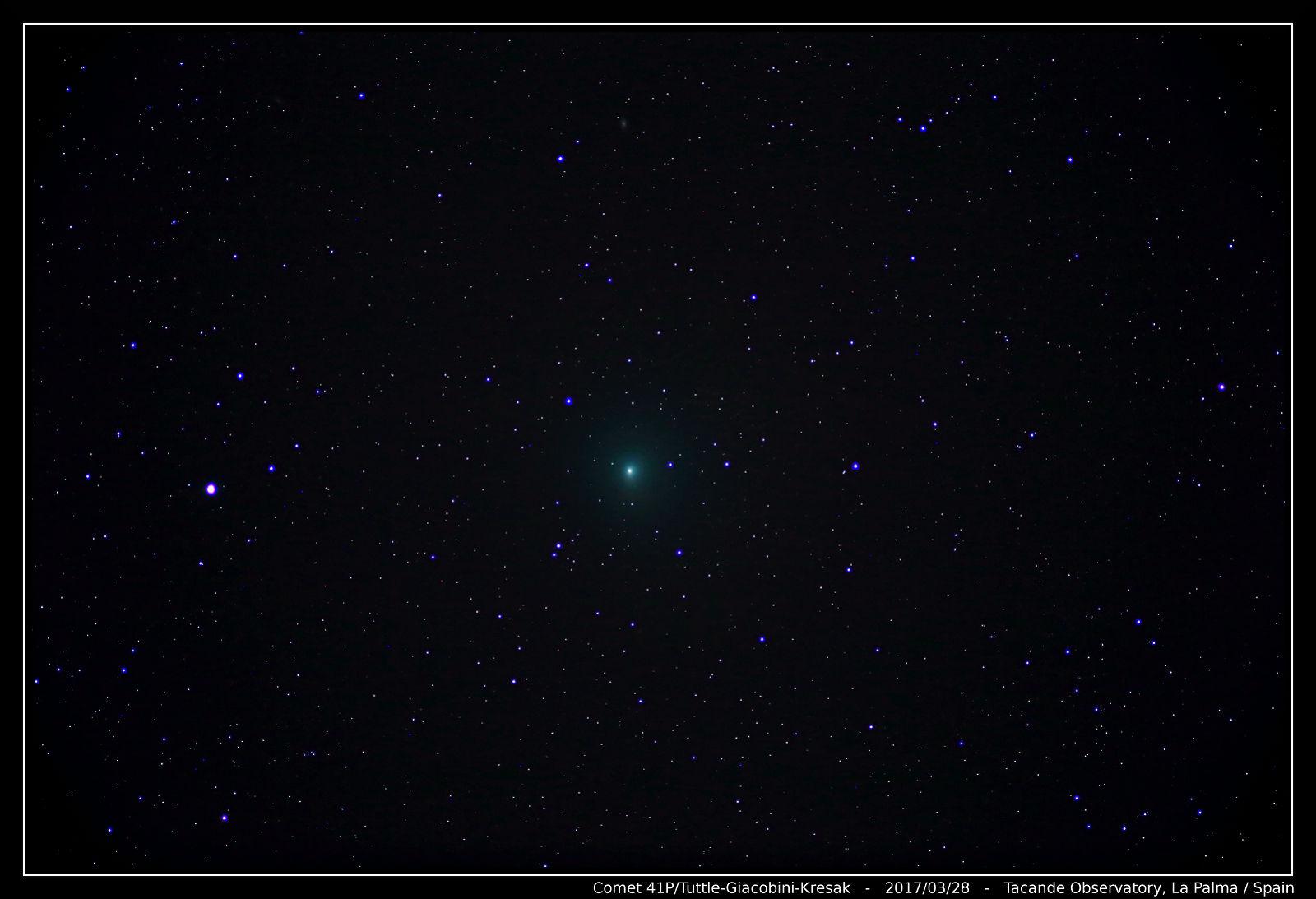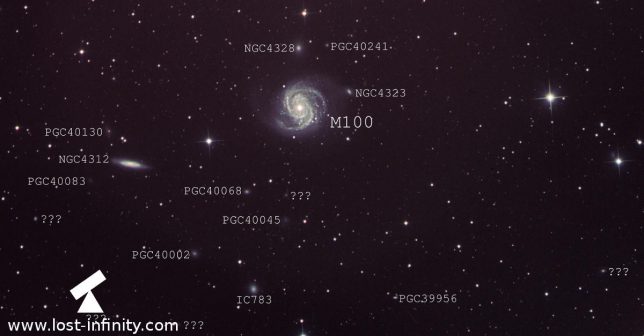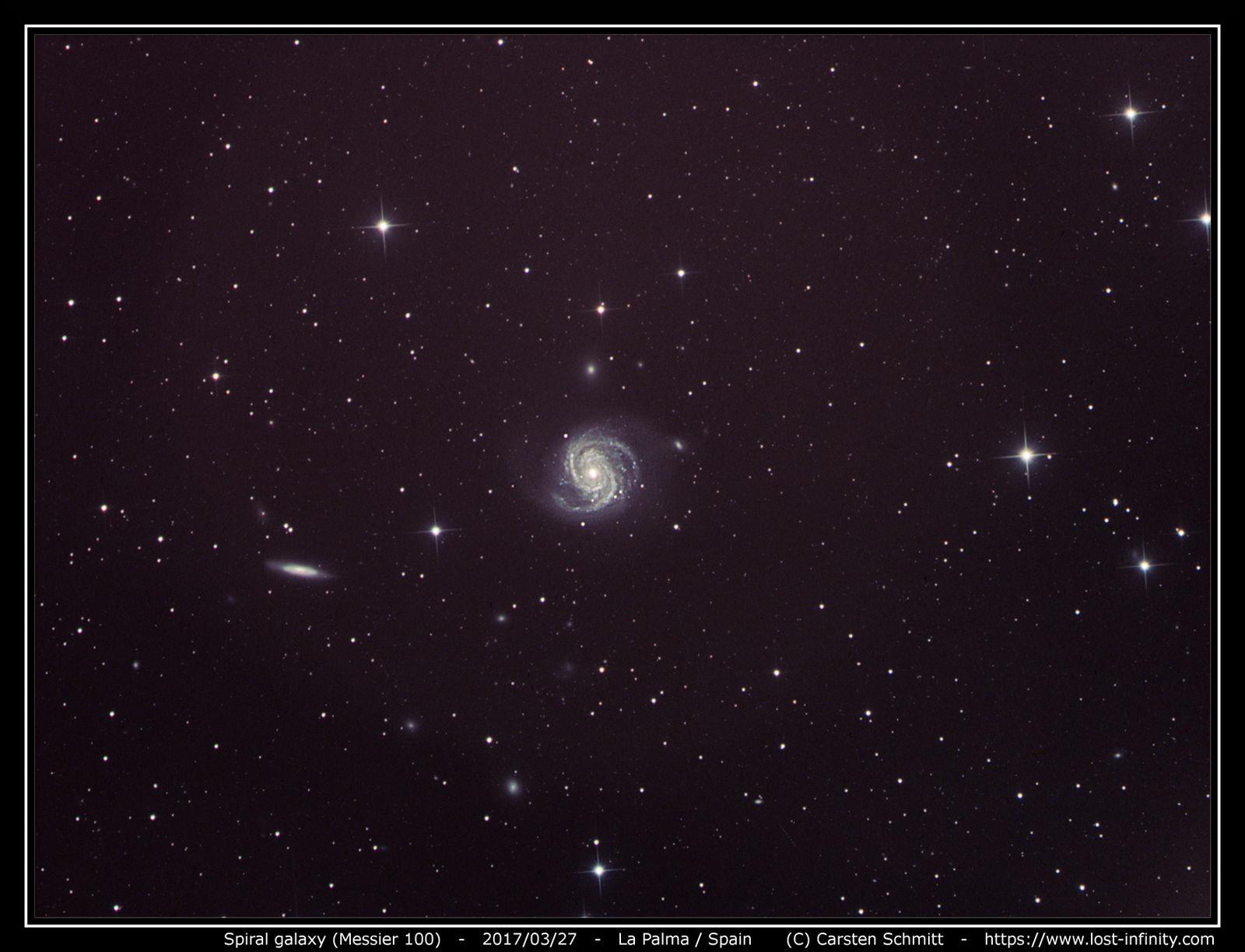End of February 2014 I already recorded M101 from Boeblingen near Stuttgart. The total exposure time was about 6 hours (!). This time I did a 2h40m exposure from Los Llanos de Aridane on La Plama with exactly the same equipment. This is the result. From my perspective the two pictures do not have a big difference despite the colour tone which of course depends on the post processing.
 | Date | 2017/03/31 |
 | Location | La Palma / Spain |
 | Object | Pinwheel Galaxy M101 |
 | Camera | Atik383L+ |
 | Guiding | yes, QHY5-II Mono via OAG |
 | Telescope | 8" GSO Newtonian |
 | Barlow lens | none |
 | Mount | EQ6Syntrek |
 | Cooling | -10°C |
 | Luminance | 10x 600s, bin: 1x1 |
 | Red | 8x 150s, bin: 2x2 |
 | Green | 8x 150s, bin: 2x2 |
 | Blue | 8x 150s, bin: 2x2 |
 | Dark | 2x |
 | Flat | 10x |
 | Total exposure | ~2h40m |
However, it’s interesting to compare the results with respect to their total exposure time: The image recorded from Boeblingen was exposed more than two times longer.
As a result of the long exposure time the stars are not as perfectly round as the ones with a shorter exposure time. Despite that I am happy to see what is still possible from a city like Boeblingen 🙂 Finally I combined both images to one final image by rotating one image until it matched exactly. Maybe I am wrong but I think in the end this combined image has a little more detail than each of the pictures alone. A full resolution image is available here.
Last updated: June 16, 2022 at 12:17 pm




























